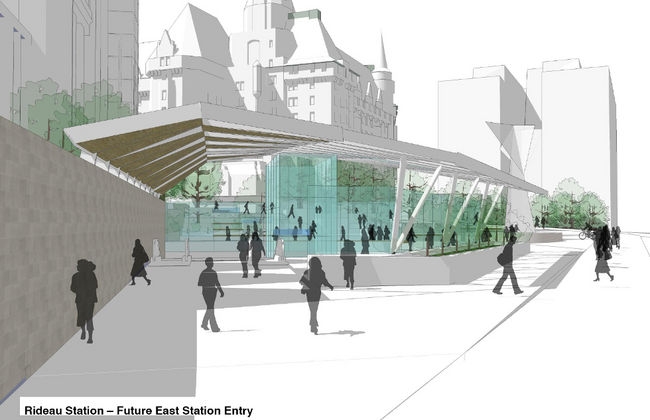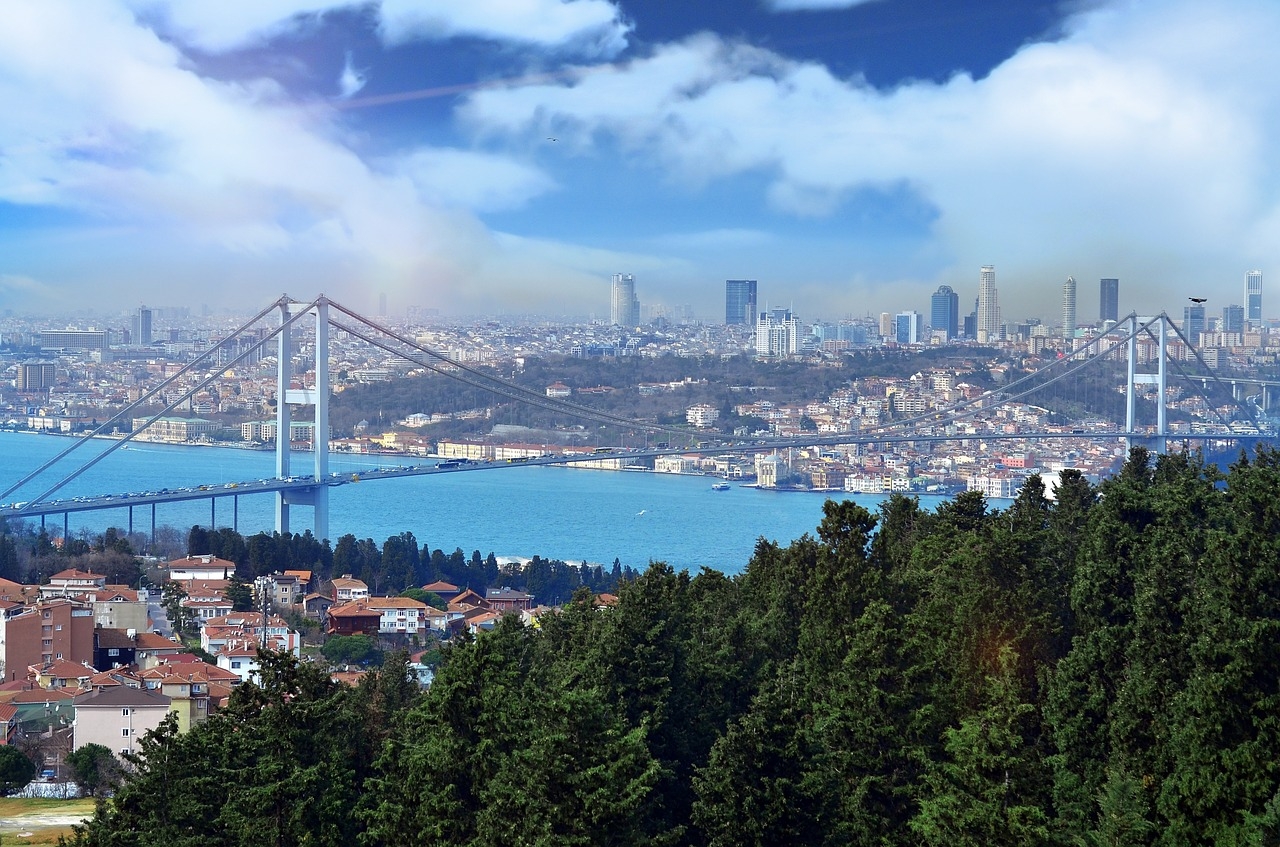
The Renaissance of Downtown Ottawa Is at Hand… but the Federal Government Is Still a Hindrance to the Process Rather than a Help
Downtown Ottawa is undergoing an architectural renaissance. Unsightly parking lots are gradually being replaced by gleaming condos and office towers.
Ottawa Life Magazine spoke to city councillor Diane Holmes, who represents Ward 14 Somerset. “When I first was elected in ’82, I thought I’d never see people from the suburbs wanting to come downtown again. We fought for 25 years to maintain the inner-city residential neighborhoods, keep them viable, keep the schools, maintain some traffic calming on the streets so kids can walk to schools, so people can have a pleasant pedestrian walkway… and over the years, people have started to come back downtown. The 60s and 70s were so destructive of our downtown.

“My main concern is the federal government leaving the downtown. If DND (Department of National Defence) empties and moves to Kanata, what will be done with DND headquarters? We are spending a billion dollars building a light rail system to bring commuters downtown. We want to keep downtown Ottawa as a main office site. My concern is more that the federal government is not considering the downtown as a prime federal district that they should be investing in and maintaining an office component in.
“Losing significant office component downtown would be a really negative factor. That billion-dollar investment in light rail is terrific for Centretown.
Having said that, Holmes notes that “the federal government keeps wanting to build the cheapest and ugliest office space – glass boxes and cement blocks. So they are the ones that go for the low bid all the time.” Esplanade Laurier looks like a bombed-out eyesore. Public Works (which now owns the twin-towered complex ) is trying to decide what to do with the building, which takes up an entire city block and has been very badly maintained.
However, the coming LRT will do much to rejuvenate downtown Ottawa. “When the LRT comes along, we can reinstate Albert and Slater,” Holmes says. “With fewer Transitway buses, these streets can become more pedestrian-friendly, with trees and outdoor cafes. At the moment, Albert and Slater are so unattractive! So spumy and dark and treeless. The Transitway was great for moving people but there was no idea of urban design, no idea of anything than to get those buses through those downtown corridors as quickly as possible. Commuters were crowded onto inadequate sidewalks with tiny little bus stops… And Queen Street, now with the two big underground transit stations in the works, those sidewalks will have to be widened because of the thousands of people constantly entering and exiting from those stations, so Queen will start to get dressed up and upgraded. The downtown streets will look a lot healthier in the future. South of Sparks is so ugly… the sidewalks so narrow, very little shopping offered. The NCC (National Capital Commission) has to figure out some way to animate the corner of Sparks and Metcalfe! There is nothing there for all the tourists who visit Parliament Hill.”
In the coming years, the condition of Rideau Street will improve immeasurably, as the LRT becomes operational and the Rideau Centre triples in size, Holmes predicts. “The Rideau Centre is a very successful shopping centre, even though it destroyed Rideau Street for 30 years. Absolutely no question, the LRT will be a big boost for the area.” Tourists now avoid Rideau Street in its present condition of squalor, garbage, bus fumes and as a magnet for social undesirables.
The route of the Western LRT has not been decided yet. The NCC is very unhappy with the City’s plans to run the LRT along the Ottawa River Parkway. “I prefer Carling Avenue myself as an LRT Western Extension,” Holmes says. “It would cost more, but we’re building for 100 years! So we should be investing (along Carling). I won’t be at all unhappy if the NCC keeps on with its refusal to let the City use the Ottawa River Parkway, so the City will finally be forced to take a serious look at Carling Avenue. Toronto kept their streetcars because the tracks and the cars were in good shape, but Ottawa had let all that infrastructure deteriorate and then along came the big car companies and talked Ottawa into getting rid of its streetcars. Big mistake! “
More condos are on the drawing board all through the Gloucester-Nepean-Lisgar area, because more people want to live near their downtown workplace. The hope is that more parking lots will disappear but “the Tribeca is bringing on so many condos that I think the market will take a ‘condo rest’ for a while. But give it 10 years and we’ll see more coming up, if the condo market is still viable.”
Holmes agrees that development in her ward is more enlightened than it has been in recent years, even though the height restriction has been lifted: “The development charges are now back on. We reinstated them about six months ago, because the development charges holiday is no longer needed as there is so much interest in building downtown. We no longer have to provide municipal incentives. We just have to provide the zoning capacity. And the community development plan for Centretown has provided high-rise zoning north of Somerset, and then south of Somerset it’s more medium-rise (about nine stories) and then protecting the two low-rise residential communities – the Golden Triangle in the east and Kent to Bronson in the west. So there is room for high-rise to the north, medium-rise in the middle and protecting the two new low-rise residential communities. So I think there is capacity downtown for many more years to come.”
Another good thing coming along is that a lot of new businesses want to locate in Little Italy on Preston Street. Of course that’s a double-edged sword because that kind of development will attract high-rises, including the mega-condo at Preston and Carling, which will be the highest building in Ottawa. “We’ll see how the condo market goes,” Holmes observes. “We’re going to need a very health condo market for that to happen. Bank Street is coming along. It’s taken a long time for it to recover from the Rideau Centre but we’re seeing lots of new businesses wanting to come on the street – and new condos surrounding it. You need residential health in order to have businesses nearby. And Elgin Street remains healthy, with lots of new people moving into the area. Unfortunately, the ByWard Market has turned into a bar strip, which is costing us a fortune in policing. On Thursday, Friday and Saturday nights, half the police service is down there.” That is a problem for condos coming in, because people may not necessarily want to live right beside a noisy bar street… and close to a cluster of homeless shelters. Is the ByWard Market rescuable? Holmes isn’t sure.
Holmes would like to see the old Ottawa Tech site go back to being a trade school. “If we ever have the provincial funding for that, that would be the best use for the site. It’s on the Transitway… great access. So if the school board hangs onto it long enough, perhaps Tech will come back again… So we have all our schools, we have our two low-rise residential areas. They’re safe and quiet. The traffic has been calmed there. We keep getting requests for more speed humps, but I think we’re kind of “speed-humped” out. And so the middle area from Cartier to Kent is designated now as a medium-rise area. So we can have lots more condos and lots more capacity for increased residential units. There’s still capacity for more commercial buildings. Two good new ones are planned for Elgin Street and they will have interesting architecture. That’s a main Parliamentary Precinct street and it’s good to see two more parking lots going and good quality commercial buildings coming in. So we’re seeing investment in the downtown commercial area and we’re seeing investment in the residential area, and that’s pretty good news for the future of Ottawa.”
Does Holmes think the NCC is doing a good job redeveloping LeBreton Flats?
“No. Many years ago I went to the announcement that the NCC made about which developer had won the competition to do LeBreton Flats and they announced that it was Claridge Homes. There had been three companies bidding and the other two stepped out (Minto was one) because they couldn’t meet the NCC’s expectations. The NCC wanted too much, which is sometimes the case with them. The head of the NCC at that time was very pleased that they had found one developer to do this very large piece of land, which I thought was a major mistake. They should have broken it up into smaller pieces of land with small developers and different architects. It would have looked less institutional and more like a real community. And then when the NCC signed on with Claridge there was no end date (stipulated in the contract)! So this developer could take another 50 years to finish the job. The NCC is still scooping toxic soil out of the Flats after all these years. This costs a fortune. So the NCC must be losing money significantly because they have to clean the site. Either that or give the land away. They have to clean it in order to sell it. But it’s probably the most toxic land in the city. Dump sites, waste disposal sites, old garages… Anyway, I think the redeveloped LeBreton Flats so far looks like an institution. It looks like a hospital complex to me because all the buildings look the same and use the same brick and style of architecture. We get a lot of complaints from the buyers of condos on the Flats who find out that they could be living beside a construction site for the next 20 years. There isn’t even a grocery store on the Flats, so those condo buyers are marooned.”
Because of NCC bungling, LeBreton Flats’ bland and snail-paced progress is a stain on the future development of a dynamic and people-oriented national capital that all Canadians can be proud of, rather than the world architectural showcase it deserved to be.









